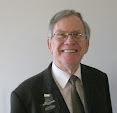What is "The Seven Mile Rule"?
The basic idea is that prior to rapid transportation, a young man usually had to find a wife somewhere close to his own home. In rural areas, the common means of transportation was walking. A young man might be allowed to take off a little time for courting, so long as he was back in time for evening chores. If he walked at a speed of 3 miles per hour, he usually had to find a wife within about 7 miles from his home. Is this a hard and fast rule? No, of course not, but it is a powerful guideline. (7 miles are about 11 km.)
If your Samuel Smith and his wife Mary had a large family in Cirencester, Gloucestershire in the 1770s and 1780s, Samuel and Mary were probably both born in that area and married there. And if you find that a "Samuel Smith" married a "Mary" 20 miles or more from Cirencester, they are probably a totally different couple. Check the map.
To borrow a real estate slogan "It's about location, location, and location."
(Caution: These men were walking from where they lived and not necessarily where they were born, they sometimes travelled longer distances to find employment.
My own grandfather Richard belonged to a later generation. He courted a girl who lived in London, England by mail, and she travelled over 4000 miles to Saskatchewan in 1913 to marry him, a man she had never met. They had 5 children and a wonderful marriage, despite the Great Depression and two world wars. )
Alberta Local History Books https://www.abgenealogy.ca/uploads/files/Resources/AlbertaHistories.pdf
Use CTRL+F to search. My family lived at Breton, Millet, and Kirriemuir. Lets see what books these places are in.
Now try to find books about places that your family lived. Try to arrange to view them and photocopy your families' stories at the Provincial Archives of Alberta.
Succession Planning: What will happen to your family history research after you die?
When I served in FamilySearch Support we sometimes received a question like this "My mother passed away leaving me with filing cabinets of family history. What do I do with it? I hate to toss my mother's endless hours of research into a dumpster, but I don't know what else to do with it. Can I simply drop it off at the nearest FamilySearch Center?"
Generally, the FamilySearch Center will not have any use for it. Books and original documents might be accepted by government archives if they are relevant to local history. Computer printouts will usually not be of interest.
You can personally scan original documents to PDF format that you can upload to FamilySearch Memories and tag them to the appropriate people in Family Tree. Also upload your family tree to multiple websites as added protection.
If you inherit someone's research, please check the FamilySearch Family Tree and add any missing people.
In my own case the answer is simple. I put it all on the FamilySearch website. I have told my family they can throw out all my papers because our family history is preserved for future generations at FamilySearch.
Don't leave your loved ones a family history mess to worry about. Maybe give them copies of any books and important documents. Put everything on www.familysearch.org
Masculine and feminine versions of surnames
Particularly in some Slavic languages this is common. Why would the daughter's surname be Kowalska when her father's surname is Kowalski? Because they are the feminine and masculine forms of the same surname. Similarly Ivanova and Ivanov / Ivanoff, etc. It is good to be aware of this as you help people with their research.
Name variations in translation
Even in languages that share the Roman alphabet, the letters do not necessarily represent the same sound. In German, for example, J is pronounced like an English Y, and W is pronounced like an English V. And some sounds may not have an exact equivalent. When the languages are written in a different alphabet, such as Cyrillic, the ways of spelling the name in English are greatly increased. So when doing research on immigrant families in particular, allow for spelling variations.
And sometimes names get literally translated into another language. A friend told me of his frustration when his Acadian "Le Blanc" family totally disappeared from New Brunswick and the surrounding area. Eventually he found a "White" family that had suddenly appeared in an English speaking area at that same time. The names, ages and other information were a perfect match for the "Le Blanc" family. They had simply translated their surname into English to fit their new location. Later, one of their children moved into a French speaking area and changed their name back to "Le Blanc". (You can search without a surname if the surname is uncertain.)
"Search, ponder and pray" is good counsel when doing research.
Pass-Along Cards for the Edmonton Family History Fair
I live a rather solitary life, so I wasn't sure why I wanted pass-along cards, but I made some anyway by putting 4 copies of the final poster on a page in my word processor. As I was leaving for a medical appointment in Edmonton, I put 4 pass-along cards in my shirt pocket. I gave one to the friendly Uber driver who told me about his family's struggles back home in Iran. I gave another to the kindly nurse at the Royal Alex, who guided me through the series of tests and interviews there. I missed the opportunity to give one to my helpful Uber driver on the way home, but the next day I gave one to the nurse that helped me in Stony Plain, and I left the 4th card in my wife's room in the nursing home, in a place where visitors and staff can see it. Now I need to print some more pass-along cards and see what opportunities come along.


